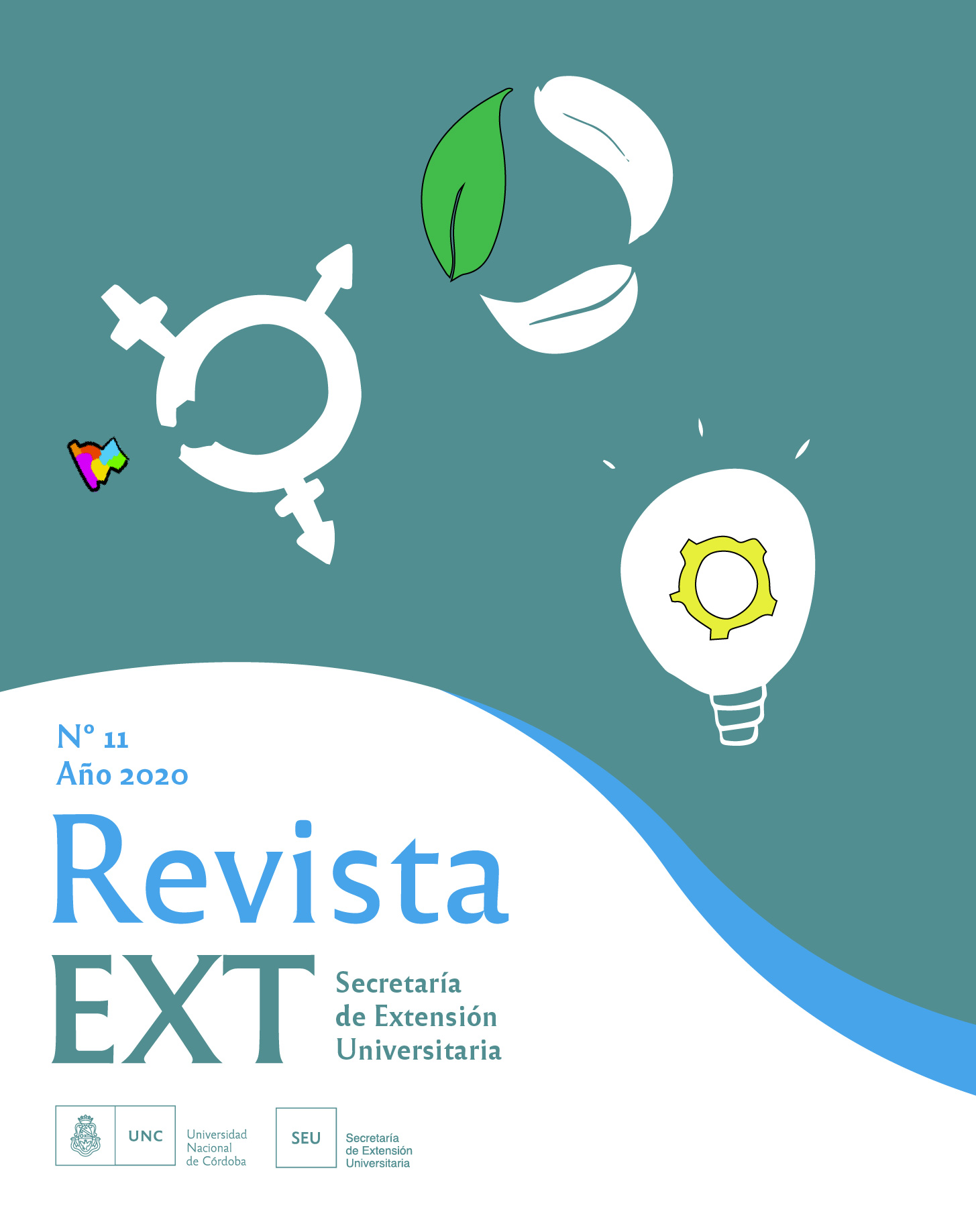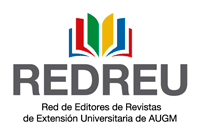El bosque serrano en Paravachasca: conocimientos científicos y saberes tradicionales
Keywords:
Native forest; popular library; Anisacate; Paravachasca; local knowledge.Abstract
This paper is the result of an outreach project of the National University of Córdoba, whose purpose was to highlight the natural and cultural heritage associated with the native forests of the Paravachasca Valley, Córdoba. Workshops were carried out to recognize the native flora and fauna of “Bosque Serrano”; these workshops were intended for adults and were carried out at at the Community Library Flavio Arnal Ponti of Anisacate. During these workshops, the traditional knowledge was put into play together with the scientific knowledge. Materials such as a community herbarium, photos, images and other artistic productions were elaborated and shared with the community at the Library's Annual Fair and in the community exhibition "Terruños, encuentros en el campo" at the Botanical Museum. In addition, some activities of the fauna workshop were also done at Vicente López y Planes primary school in Anisacate.
Downloads
References
Bermúdez, G. M., Battistón, L. V., Capocasa, M. C. G. y De Longhi, A. L. (2017). Sociocultural variables that impact high school students’ perceptions of native fauna: a study on the species component of the biodiversity concept. Research in Science Education, 47(1), 203-235.
Campos, C. M., Greco, S., Ciarlante, J. J., Balangione, M., Bender, J. B., Nates, J. y Lindemann-Matthies, P. (2012). Students’ familiarity and initial contact with species in the Monte desert (Mendoza, Argentina). Journal of Arid Environments, 82, 98-105.
Campos, C. M., Nates, J. y Lindemann-Matthies, P. (2013). Percepción y conocimiento de la biodiversidad por estudiantes urbanos y rurales de las tierras áridas del centro-oeste de Argentina. Ecología Austral, 23, 174-183.
Cagnolo L, Cabido M, y Valladares G. 2006. Plant species richness in the Chaco Serrano Woodland from central Argentina: Ecological traits and habitat fragmentation effects. Biological conservation 132, 510-9.
Cingolani, A. M., Noy-Meir, I., Renison, D. D. y Cabido, M. (2008). La ganadería extensiva: ¿es compatible con la conservación de la biodiversidad y de los suelos?. Ecología austral, 18(3), 253-271.
Díaz, S., Pascual, U., Stenseke, M., Martín-López, B., Watson, R. T., Molnár, Z., Hill, R., Chan, K. M. A., Baste, I. A., Brauman K. A., Polasky, S., Church, A., Lonsdale, M., Larigauderie, A., Leadley, P. W., van Oudenhoven, A. P. E., van der Plaat, F., Schröter, M., Aumeeruddy-Thomas, Y., Bukvareva, E., Davies, K., Demissew, S., Erpul, G., Failler, P., Guerra, C. A., Hewitt, C. L., Keune, H., Lindley, S., Shirayama, Y. (2018). Assessing nature's contributions to people. Science, 359(6373), 270-272.
Eyssartier, C., Margutti, L. y Lozada, M. (2017). Plant knowledge in children who inhabit diverse socio-ecological environments in northwestern Patagonia. Journal of Ethnobiology, 37(1): 81-96.
Frate, L., Acosta, A. T. R., Cabido, M., Hoyos, L. y Carranza, M. L. (2015). Temporal changes in forest contexts at multiple extents: three decades of fragmentation in the Gran Chaco (1979-2010), Central Argentina. PLOS ONE 10(12): e0142855. https://doi.org/10.1371/journal.pone.0142855.
Frieri, Sandra (Comp.). (2014). Manual de herramientas participativas para la identificación, documentación y gestión de las manifestaciones del Patrimonio Cultural Inmaterial. Convenio Patrimonio Cultural Inmaterial desde la perspectiva local. Bogotá: Ministerio de Cultura & Tropenbos Internacional Colombia.
Giorgis, M. A., Tecco, P. A., Marcora, P., Cingolani, M., Paiaro, V. y Renison, D. (2006). Las invasiones biológicas y su problemática ambiental. IMBIV (Conicet-UNC). Manual para docentes.
Giorgis, M., & Tecco, P. A. (2014). Árboles y arbustos invasores de la Provincia de Córdoba (Argentina): una contribución a la sistematización de bases de datos globales. Boletín de la Sociedad Argentina de Botánica, 49(4), 681-603.
Hirschfeld, G. M., Caminos, R., Vidal, M. E. y Nores, M. J. (2019). Estrategia multimedial destinada a niños para el conocimiento y valoración de la biodiversidad y los ecosistemas nativos. Revista de Educación en Biología, 22(2), 39-52. Joshi, A. R. y Joshi, K. (2000). Indigenous knowledge and uses of medicinal plants by local communities of the Kali Gandaki Watershed Area, Nepal. Journal of Ethnopharmacology, 73(1-2), 175-183.
Katewa, S. S., Chaudhary, B. L. y Jain, A. (2004). Folk herbal medicines from tribal area of Rajasthan, India. Journal of ethnopharmacology, 92(1), 41-46.
Leadley, P., Pereira, H. M., Alkemade, R., Fernandez-Manjarrés, J. F., Proença, V., Scharlemann, J. P. y Walpole, M. J. (2010). Biodiversity Scenarios: Projections of 21st century change in biodiversity and associated ecosystem services. Technical Series, 50, 1-132.
Martínez, G. J. y Planchuelo, A. M. (2003). La medicina tradicional de los criollos campesinos de Paravachasca y Calamuchita, Córdoba (Argentina). Scripta Ethnologica, 25, 83-116.
Martínez, G. J. (2010). Las plantas en la medicina tradicional de las Sierras de Córdoba: Un recorrido por la cultura campesina de Paravachasca y Calamuchita. Córdoba. Argentina: Ediciones del Copista.
Martini, Y., Pérez Zavala, G. y Aguilar, Y. (comps.). 2009 Las sociedades de los paisajes áridos y semiáridos del centro-oeste argentino: 443-448. Río Cuarto, Editorial de la Universidad Nacional de Río Cuarto. ISBN 978-950-665-558-7.
Morón, H. & Morón, C. (2017). ¿Educación Patrimonial o Educación Ambiental?: Experiencias educativas perspectivas que convergen para la enseñanza de las ciencias. Revista Eureka sobre Enseñanza y Divulgación de las Ciencias, 14 (1), 244-257.
Nates, J., Campos, C. y Lindemann-Matthies, P. (2010). Students' perception of plant and animal species: a case study from rural Argentina. Applied Environmental Education & Communication, 9(2), 131-141.
Raja, D., Blanché, C. y Xirau, J. V. (1997). Contribution to the knowledge of the pharmaceutical ethnobotany of La Segarra region (Catalonia, Iberian Peninsula). Journal of Ethnopharmacology, 57(3), 149-160.
Schaaf, A. A., Alcalde, S., Rivera, L. y Politi, N. (2018). Conocimiento de estudiantes primarios sobre el bosque y la biodiversidad de las Yungas Australes en la ciudad de San Salvador de Jujuy, Argentina. Ecología Austral, 28(3), 565-571.
Siebert, S. F. y Caniago, I. (1998). Medicinal plant ecology, knowledge, and conservation in Kalimantan, Indonesia. Economic Botany, 52(3), 229-250.
Tabuti, J. R., Lye, K. A. y Dhillion, S. S. (2003). Traditional herbal drugs of Bulamogi, Uganda: plants, use and administration. Journal of ethnopharmacology, 88(1), 19-44.
Voeks, R. A. (1996). Tropical forest healers and habitat preference. Economic Botany, 50(4), 381-400.
Volkmann, L. y Renison, D. (2003). Conservación y Reforestación en las escuelas de las Sierras Grandes de Córdoba, Argentina. Manual para docentes en escuelas de las Sierras Grandes y Comechingones.
Downloads
Published
Issue
Section
License

This work is licensed under a Creative Commons Attribution-NonCommercial-ShareAlike 4.0 International License.
Aquellos autores/as que tengan publicaciones con esta revista, aceptan los términos siguientes:
- Los autores/as conservarán sus derechos de autor y garantizarán a la revista el derecho de primera publicación de su obra, el cuál estará simultáneamente sujeto a la Licencia de reconocimiento de Creative Commons que permite a terceros compartir la obra siempre que se indique su autor y su primera publicación esta revista.
- Los autores/as podrán adoptar otros acuerdos de licencia no exclusiva de distribución de la versión de la obra publicada (p. ej.: depositarla en un archivo telemático institucional o publicarla en un volumen monográfico) siempre que se indique la publicación inicial en esta revista.
- Se permite y recomienda a los autores/as difundir su obra a través de Internet (p. ej.: en archivos telemáticos institucionales o en su página web) después del proceso de publicación, lo cual puede producir intercambios interesantes y aumentar las citas de la obra publicada. (Véase El efecto del acceso abierto).





